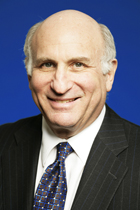Following a well-worn path of decisions from other states, the Supreme Court of Wyoming adopted the prevalent of three legal theories to decide the meaning of “any one accident” found in standardized Uninsured Motorist (UM) policy limit language of automobile policies. The case, Hurst v. Metropolitan Property and Casualty Insurance Company, was filed September 12, 2017. It is reported at 2017 WY 104; 2017 Wyo. LEXIS 109.
The facts of the matter, stipulated by the parties, were that Larry and Sara Hurst, while riding their separate bicycles, were struck from behind by a van operated by uninsured driver Hannah Terry. All three were traveling in the same direction on the shoulder of US Highway 87 in Wyoming. At the time of the collisions the Hursts were located in the emergency lane of the highway and outside of the nearest traffic lane. Sarah was riding her bicycle approximately thirty feet ahead of Larry.
After Terry’s vehicle entered the emergency lane, its left front section struck Larry’s bicycle. Larry was thrown to the ground approximately 166 feet following impact with the van. Approximately one-half to one second elapsed between Terry first striking Larry and later striking Sarah with the motor vehicle. Larry was killed in the first collision, and Sara seriously injured in the second, all as the direct result of Terry’s negligent driving.
The Hursts filed claims with Metropolitan, their auto policy insurer with uninsured motorist (UM) coverage/benefits in the amount of “$300,000 each person/$300,000 each accident.” Metropolitan deposited $300,000 in court and filed an interpleader action contending that the injuries and death were the result of one accident, not two, establishing a maximum of $300,000 of UM coverage. The Hursts argued that their injuries and death resulted from two accidents, affording them $600,000 of UM coverage. Metropolitan’s policy endorsement for UM coverage read:
“Limit of Liability
“A. The limit of liability shown in the Declarations for ‘each person’ is the most we will pay for all damages, including prejudgment and post-judgment interest, due to [bodily injury] to any one person as a result of any one accident. This includes all damages sustained by any other person as a result of that [bodily injury]. Subject to this limit for ‘each person’, the limit shown in the declarations for ‘each accident’ is the most we will pay for all damages, including prejudgment and post-judgment interest, arising out of [bodily injury] sustained by two or more persons resulting from any one accident.
“If a single limit is shown in the declarations for ‘each accident’ this is the most we will pay for any one accident . . . .
“This is the most we will pay regardless of the number of:
“1. Insureds;
“2. Claims made;
“3. Vehicles shown in the Declarations
“4. Premiums shown in the Declarations; or
“5. Vehicles involved in the accident.” (Emphasis in original.)
After the trial court granted Metropolitan’s motion for summary judgment, holding that the events amounted to one accident, the Hursts appealed. The Supreme Court held that, although the trial court adopted the correct legal theory upon which to determine the number of accidents for application of UM coverage and policy limits, it found that the factual record was insufficiently clear to permit the determination of the policy limits applicable to the incident.
On the way to its decision, the Wyoming Supreme Court observed that legal commentators have separated the tests for determining the number of accidents into three categories: (1) the cause theory, (2) the effect theory, and (3) the event theory.
Under the cause theory, which the court said was adopted by an “influential majority of jurisdictions,” the number of accidents is determined by the number of causes of the injuries. This theory asks the question of whether there was one uninterrupted and continuing cause resulting in all the injuries and damage. Under this theory, if one cause is interrupted and replaced by another intervening cause, the chain of causation is broken, resulting in two or more accidents, depending on the number of intervening causes. Most importantly, when collisions between or among multiple vehicles are separated by a period of time, or the uninsured motorist maintains or regains control of the vehicle before a subsequent collision, there are multiple occurrences.
Under the second theory, the “effect theory,” the court considers the number of accidents from the perspective of the injured parties. Since the policy coverage limits under this theory are based on the effect of the accident, this theory extends the insured’s policy limits to each injured party, a phenomenon criticized as not giving effect to the intent of the contracting parties. This criticism appears just, since the limit of liability expands to match the number of individuals injured in the incident. In fact, for this reason the effect theory has been nicknamed the “windfall” theory. Indeed, obviously, it was intended the policy have monetary limits of coverage, but if the amount stipulated in the policy as a limit is multiplied by the number of claimants, rather than by the events causing the damage, this theory would make the policy benefits potentially limitless.
Under the third theory, the “event theory,” the court considers the number of events that occurred. Under this theory an accident or occurrence equates with the liability-triggering event, regardless of the details of how or why the event happened. “Thus,” said the court, “the liability-triggering event test is a narrow class that can overlap with the cause test under certain circumstances. Those rejecting the event theory note that it is not clear how the event concept advances the analysis. Is each event just another word for accident, making the analysis circular?”
The trial court, affirmed by the Supreme Court, adopted and applied the majority view, which it said was the cause theory, to determine the number of accidents involved in the case. The court said that that theory is appropriate because it is consistent with the method of computing insurance rates by sound rating organizations.
The Supreme Court held that, although the trial court properly adopted the cause theory, there was insufficient factual development in the record for a thorough consideration of the control elements of the cause theory. The appellate court said that when collisions between multiple vehicles are separated by a period of time, or the driver maintains or regains control of the vehicle before a subsequent collision, there are multiple accidents, not just one. The court therefore concluded that the stipulated facts were inconclusive regarding the tortfeasor’s control of her vehicle, so the matter must be remanded for trial of that issue.
Was this article valuable?
Here are more articles you may enjoy.


 Gallagher: Global Insured Natural Disaster Claims Again Dominated by Severe U.S. Storms
Gallagher: Global Insured Natural Disaster Claims Again Dominated by Severe U.S. Storms  SC High Court Strikes ‘Troubling’ Denial of Comp Claim, Says Can’t Be Based on Stats
SC High Court Strikes ‘Troubling’ Denial of Comp Claim, Says Can’t Be Based on Stats  Supplemental Claims Don’t Need to Include Damage Estimates, Fed Appeals Court Says
Supplemental Claims Don’t Need to Include Damage Estimates, Fed Appeals Court Says  EVs Head for Junkyard as Mechanic Shortage Inflates Repair Costs
EVs Head for Junkyard as Mechanic Shortage Inflates Repair Costs 